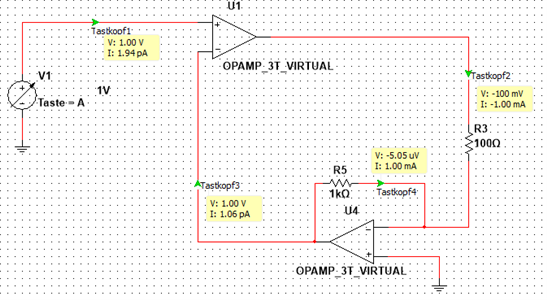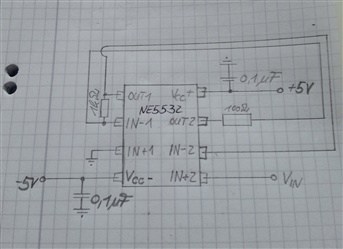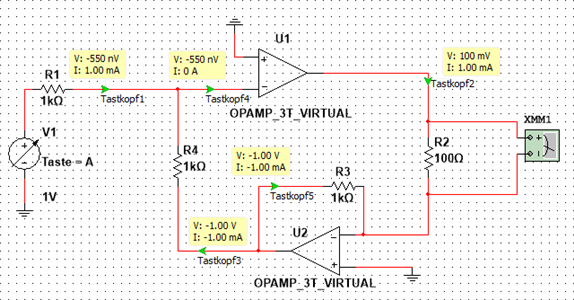Hallo,
I'm new to the Ti E2E Community Forum.
I tried to build a galvanostat-curcuit (figure1) that consists of two components. The Components are a voltage controlled current source to convert the input-voltage into an equivalent voltage and a transimpedance amplifier to convert this current back into a voltage. For this curcuit I used the NE5532 opamp.
At first I tried to build up the curcuit (figure1) on a board (figure2) to test the dc functionality, but it does not work well. The input-voltage is 1V and the current through the 100 Ohm resistor is 50mA. All other values are also wrong (to high, some of them max level).
Next, i tried to build up an alterntive circuit (figure3), but the same problem and the output of the opamp oscillate.
I thought all these Problems are caused by instability and therefore i decided to simulate the curcuit to investigate the stability in the bode-plot. I tried to simulate with Qucs but I do not know exactly how to do this with Qucs.
Maybe anyone of you can tell me where my problem lies exactly, and maybe give me a tip for the simulation with Qucs?
Sorry for my very bad english!
Many thanks
Philipp
Figure1
Figure2
Figure3





